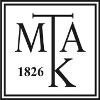Majdán, Mira (2025) Nehéz a kő és súlyos a homok : Előzetes tanulmány a Pécsvárad határában feltárt őskori településrészletekről = „A stone is heavy and the sand is weighty” Preliminary report of the Prehistoric settlement sections excavated on the outskirts of Pécsvárad. JANUS PANNONIUS MÚZEUM ÉVKÖNYVE, 58. pp. 105-131. ISSN 0553-4429
|
Text
jpm_evkonyv_58_2025_Majdan.pdf - Published Version Available under License Creative Commons Attribution Non-commercial No Derivatives. Download (5MB) | Preview |
Abstract
A Baranya vármegye északkeleti részén, a Zengő lábánál fekvő Pécsvárad határában, attól nyugatra elterülő Koch-malom lelőhelyen homokbánya-bővítéshez kapcsolódóan régészeti megfigyelést végeztünk 2024 tavaszán. Már a humuszolás során kiderült, hogy egy őskori megtelepedési helyszínre bukkantunk. A március közepétől május közepéig tartó ásatás során több mint 100 objektumot azonosítottunk és tártunk föl. Az érintett 1,2 ha terület észak-nyugati részét főleg a középső neolitikumra tehető Dunántúli Vonaldíszes kerámia kultúra, míg a dél-keleti szakaszát a kora bronzkori Somogyvár-Vinkovci kultúra objektumai foglalták el. A települési objektumok nagyjából egyharmad – kétharmad arányban oszlottak meg a kora bronzkor javára.A neolitikum időszakára keltezhető objektumok közül kiemelkednek azok a hosszanti gödörstruktúrák (Längsgrube), melyek a korszakban jellegzetes oszlopszerkezetes hosszúházakhoz köthetők. Ezekből jelentős mennyiségű kerámia, több idol töredéke, egy karcolt díszű oltár darabjai, valamint nagy mennyiségű pattintott és csiszolt kőeszköz került elő.A kora bronzkori objektumok között megemlítendőek a tűzhelyek, a két feltételezett urnasír, valamint a négy „strukturált depozitum”, melyek több edényt, szarvasagancsot, állati eredetű lapockákat, köveket és mészdarabokat tartalmaztak, réteges elrendezésben. | At the Koch-malom site, located west of Pécsvárad, archaeological monitoring was conducted in the spring of 2024 as part of a sand quarry expansion. Even during the topsoil removal phase, it became evident that we had discovered a Prehistoric settlement site. During the excavation, which lasted from mid-March to mid-May, more than 100 features were identified and explored. The excavated 1.2-hectare area was primarily divided into two sections: the northwestern part was occupied by features of the Middle Neolithic Transdanubian Linear Pottery culture, while the southeastern section contained features associated with the Early Bronze Age Somogyvár-Vinkovci culture. Settlement features were distributed roughly in a 1/3 – 2/3 ratio in favor of the Early Bronze Age. Among the Neolithic features, the „Längsgrube” formations stand out, which are usually connected to the longhouses of the period. From these, several idol fragments, pieces of a linear-decorated small altar, and a large number of chipped and polished stone tools were unearthed. The Early Bronze Age features included hearths, two presumed urn graves, and four ”structured deposits” containing layered arrangements of vessels, antlers, animal scapulae, stones, and pieces of lime.
| Item Type: | Article |
|---|---|
| Uncontrolled Keywords: | vonaldíszes kerámia, idol, oltárka, Somogyvár-Vinkovci, belső díszes talpas tál, linear pottery, idol, altar, Somogyvár-Vinkovci, interior decorated footed bowl |
| Subjects: | C Auxiliary Sciences of History / történeti segédtudományok > CC Archaeology / régészet N Fine Arts / képzőművészet > NA Architecture / építészet |
| SWORD Depositor: | MTMT SWORD |
| Depositing User: | MTMT SWORD |
| Date Deposited: | 18 Jul 2025 06:57 |
| Last Modified: | 18 Jul 2025 06:57 |
| URI: | https://real.mtak.hu/id/eprint/221252 |
Actions (login required)
 |
Edit Item |



